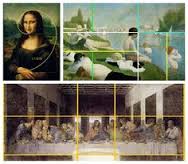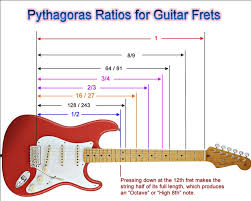Overview
Mathematical patterns underlie everything in the natural world, including those human extensions of the natural world that surround us. Some of those mathematical patterns are expressed in the arts, including visual arts such as painting and sculpture, and the physics and mathematics of music. Other mathematical patterns are expressed in performance arts, such as the choreography of dance.
Patterns in Art
Renaissance artists represented mathematical patterns and concepts in visual form, using mathematical concepts such as symmetry and perspective. A two-dimensional canvas is used to portray three-dimensional surfaces. Painters used tricks of perspective, optical illusions of geometry such as the vanishing point and the horizon line. They were especially skilled at making objects appear to converge at a single point, just as people might see parallel train tracks in the distance. Those converging points fall along the horizon. Also, objects appear larger the closer they are and smaller the farther away they are, even though the real size of the objects has not changed. Symmetry was also important to create pleasing patterns of objects or shapes in a painting or artwork made of mosaic, fiber, or glass.
The Golden Rectangle, Golden Ratio, and Standards of Beauty
From the time of the ancient Greeks, through the Renaissance. The Golden Ratio, also known as the divine proportion, was represented by the Greek letter phi φ. It is an irrational number, about 8/5. Sculptors used it to determine the most pleasing lines in their works. The Golden Rectangle is related to the Golden Ratio. In the Golden Rectangle, the long side of the triangle is φ times as long as the short side. Leonardo da Vinci used the Golden Rectangle in his paintings and sculpture, putting important figures inside one. Painters from Seurat to Mondrian, as well as painters and artists of the present day, use the relationships of the Golden Ratio and the Golden Rectangle in many of their works.
Patterns in Music
Pythagoras wrote extensively about the geometric foundations of music, the relationships of pitch, modes, and octaves. For example, if a string of a certain length is plucked, dividing it into shorter lengths will produce a higher pitch, as anyone who has ever played a stringed instrument knows. Similarly, a Pan pipe consists of four or five wooden recorders of different lengths that are bound together. Octaves are pleasant because of the relationships between their pitches and frequencies. The Greeks used a 7-note diatonic scale, in various relationships between tones, called modes. Modes predated the 12-tone scale that was well-tempered by Johann Sebastian Bach. Time signatures are standardized, and the length of time each note is played in a time signature can be represented by fractions and patterns.
Patterns in Kinetic Arts
Dance and other kinetic arts have mathematical relationships of their own, modeled by dynamic equations and the behavior of solid objects in space. Think of the parabolic leaps made by dancers as they seem to fly across the stage and pause in midair, or the relationships between dancers as they cross the stage, from ballroom dancing to hip-hop.
Interested in geometry tutoring services? Learn more about how we are assisting thousands of students each academic year.
SchoolTutoring Academy is the premier educational services company for K-12 and college students. We offer tutoring programs for students in K-12, AP classes, and college. To learn more about how we help parents and students in Middletown, CT: visit: Tutoring in Middletown, CT




